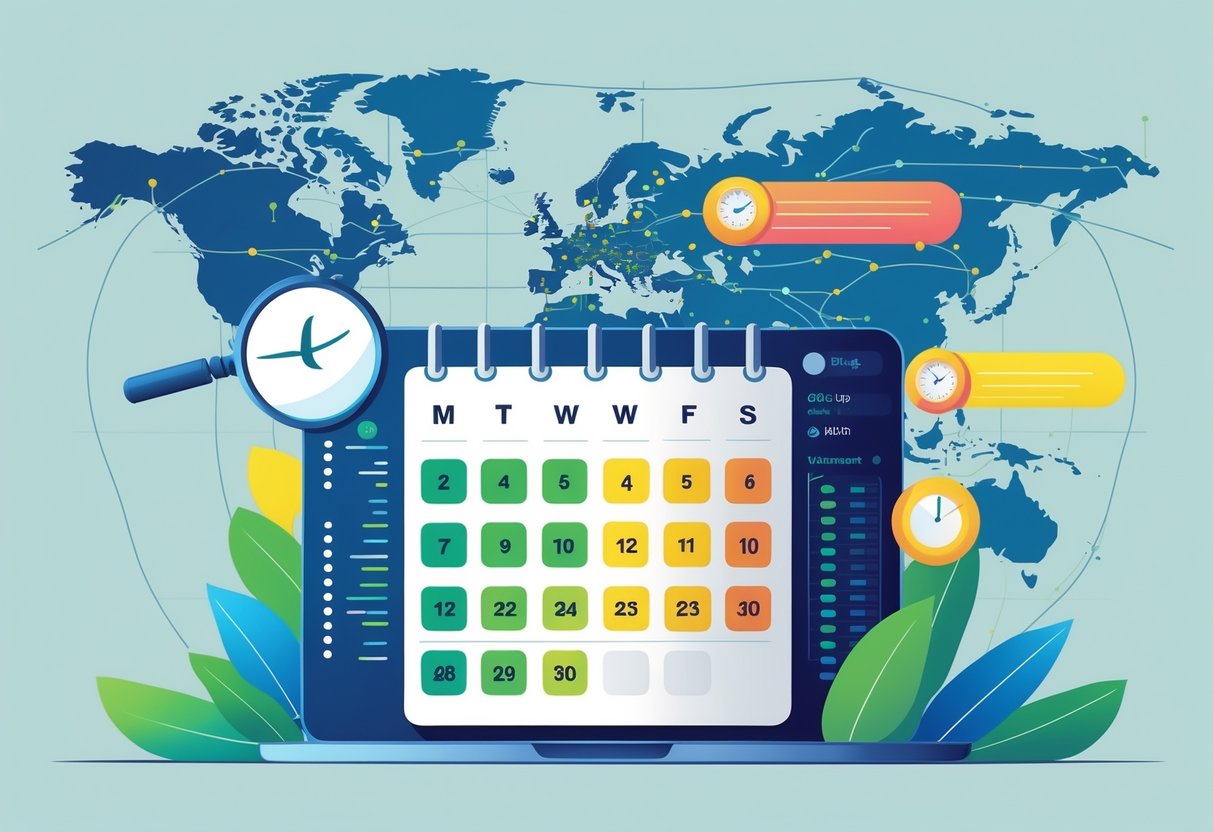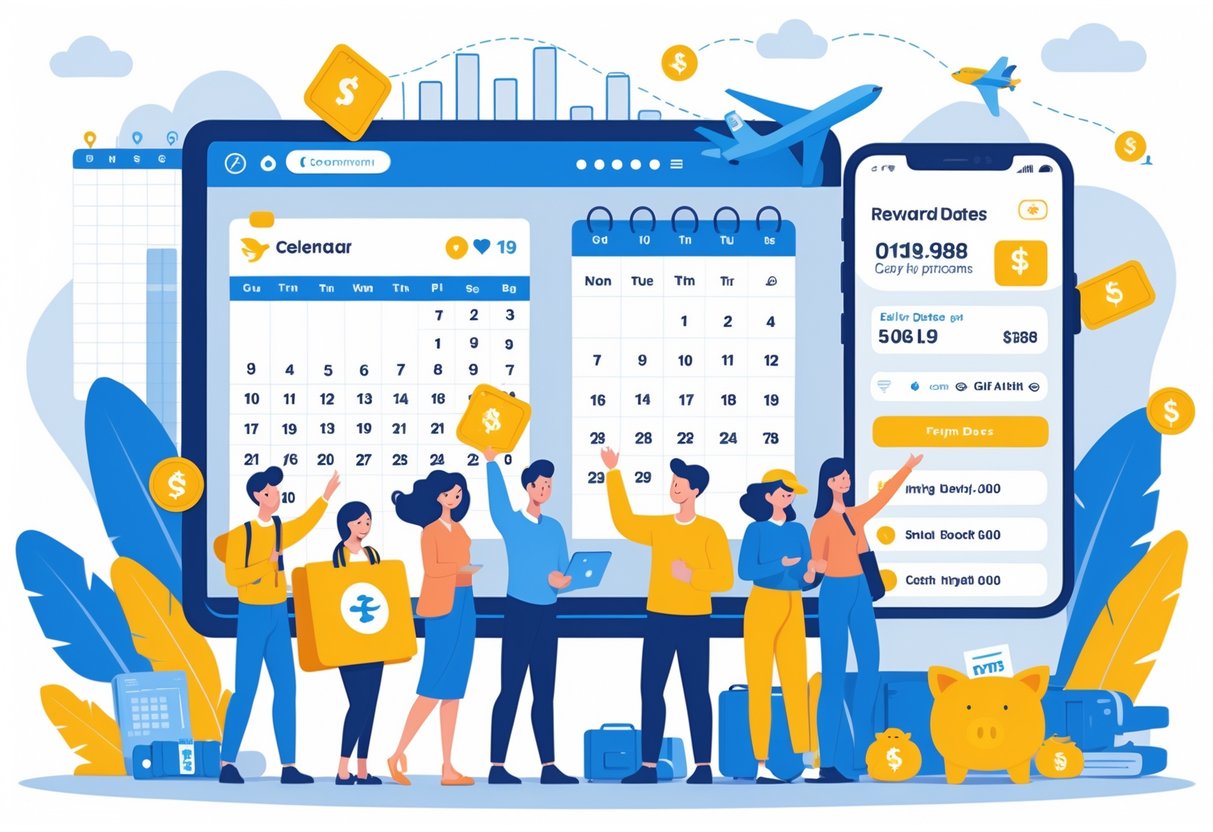
Using Loyalty Programs and Rewards to Save More

Frequent travelers and casual flyers alike can stretch their budget further by utilizing loyalty programs, credit card rewards, and travel booking platforms that offer exclusive perks. Learning to combine these savings strategies can provide access to discounted flights, free upgrades, and added travel benefits.
Understanding Airline Loyalty Programs
Airline loyalty programs reward repeat customers with miles or points for each flight. These points can be redeemed for free flights, seat upgrades, or discounted airfare.
Membership is typically free, and the more they fly with a specific airline or its partners, the faster their points accumulate. Flexible travelers gain extra value because they can choose dates with the lowest reward redemption rates.
Adjusting their travel schedule—even by a day or two—can help unlock much higher value from each mile or point earned. Some programs also offer priority boarding, waived baggage fees, and lounge access.
Family members or groups can pool their collected miles with some airlines, further increasing their redemption power. Engaging with airline partners, such as hotels or car rental agencies, can help users build their miles just by completing regular travel activities.
For further tips on leveraging loyalty programs, Bankrate explains how families can save thousands on travel by using these strategies in their guide to loyalty programs.
Maximizing Credit Card Points
Credit card issuers often provide travel-oriented cards that reward users for everyday purchases. These cards typically earn points on dining, groceries, and travel expenses, which can be transferred to airline or hotel partners for maximum value.
Annual fee travel credit cards often include perks such as travel insurance, airport lounge access, and free checked bags. Some cards provide sign-up bonuses worth hundreds of dollars in travel credit after reaching a minimum spend requirement.
The key is to pay off the card balance each month to avoid interest charges and to align card selection with spending habits and preferred airlines. Many credit cards offer flexible redemption options, letting users combine credit card points with airline miles for even greater savings and flexibility on their next flight booking.
Taking Advantage of Expedia Rewards
Expedia Rewards enables travelers to collect points on hotels, flights, rental cars, and vacation packages booked through the Expedia platform. Unlike many airline programs, users can earn and redeem points on a wide range of brands and services within the Expedia network.
Expedia rewards members with Silver and Gold status—unlocked by frequent bookings—which brings added perks like hotel upgrades, late checkout, and exclusive member rates. The rewards structure is straightforward: points never expire as long as users book travel through Expedia at least once every 18 months.
Booking hotels and flights as a bundle through Expedia can help users accumulate points faster while also taking advantage of package discounts. For those who value flexibility and prefer to compare multiple airlines and hotels, Expedia Rewards offers a simple pathway to earn and redeem rewards on most major travel expenditures.
Bundling and Additional Travel Savings Tips

Travelers often save more by combining flight bookings with hotel stays or car rentals, using travel booking tools, and considering flexible ticket types. Taking advantage of these strategies reduces total trip costs and allows for more value within any travel budget.
Bundle Flights, Hotels, and Car Rentals
Many online travel agencies and airline websites offer bundling options, letting travelers book flights, hotels, and car rentals in one purchase. These “bundle and save” deals can offer discounts that are not available when booking each element separately.
Packaging multiple travel components is also convenient, streamlining the planning experience. Some sites show total savings immediately, while others apply the discount at checkout.
The most significant savings usually occur for popular tourist routes or longer stays. Major platforms often have flexible cancellation or change policies specifically for bundle bookings, adding extra peace of mind for changing plans.
To maximize benefits, compare bundle costs to à la carte bookings before committing. Bundling works best for travelers with set destinations and plans, but it may not suit those seeking maximum flexibility with every aspect of their trip.
Travel Hacks to Optimize Savings
Applying specific booking strategies and using smart tools makes it easier to find cheap flights and hotel packages. Setting price alerts and monitoring flash sales helps catch temporary price drops.
Many seasoned travelers use fare comparison apps to track deals across multiple airlines and dates. Booking during off-peak days or less popular months can yield lower rates.
For example, some experts recommend booking flights on Sundays or flying in August to unlock lower fares, as seen in flight booking tips for 2025.
Joining loyalty programs or using travel reward credit cards helps rack up points or gain exclusive access to discounted rates. Staying flexible with dates and destinations, where possible, also increases the chances of finding the best price.
Booking One-Way and Round Trip Tickets
Comparing one-way flights with round trip options is important, as the best value varies by route and airline. In some cases, booking two one-way tickets, especially with different carriers, can be cheaper than a round trip.
International itineraries, low-cost airlines, or those who need flexibility often benefit most from this approach. For other travelers, round trip tickets offer lower fares and simplified logistics, particularly on major routes.
Round trip fares also sometimes include benefits like free or discounted checked bags and better schedule choices. It is crucial to check restrictions, since some one-way fares have change penalties or do not include perks found in round trip deals.
Travelers should assess their exact route, preferred airlines, and travel dates to decide which approach secures the greatest savings.
Booking for International vs. Domestic Travel

International flight tickets and domestic airfare require different booking tactics due to variations in airline pricing and demand patterns. The optimal time to secure low fares depends on your destination, cabin class, and how flexible your dates are.
Timing Differences for International Travel
Booking international flights typically requires more advance planning for the best deals. Travelers usually find the lowest prices for long-haul flights when booking two to six months before departure.
Major holidays, school vacations, and popular travel seasons can lead to higher prices. Locking in tickets well ahead of these periods is wise.
It’s common for international tickets to drop in price about three to four months before departure. Waiting too long may lead to increased fares as availability decreases.
Many studies show that booking on Sundays can result in savings for international routes. Flexibility in travel dates remains a key advantage.
Flying mid-week or at off-peak times can help avoid price spikes common with weekend and holiday departures.
Considerations for Domestic Flights
Domestic flights have a narrower booking window for the best prices, often found just one to two months before departure. Airlines typically release fare sales and adjust prices closer to the travel date for shorter routes within the same country.
Last-minute travelers may still get reasonable fares, but risk higher prices or limited seat selection during peak travel periods. The lowest fares for U.S. domestic flights are usually available when purchasing on Sundays.
Booking mid-week can also help, but the difference is less dramatic than with international travel. Booking one or two months ahead for domestic trips is generally the most efficient strategy.
Premium Economy and Other Fare Classes
Premium economy and business fare classes follow different pricing trends compared to economy. Premium cabins, including premium economy, may offer discounted rates during fare sales, though these sales are less frequent and often reserved for off-peak travel periods or special promotions.
Flexibility is vital—travelers willing to adjust dates or routes stand a better chance at lower premium fares. For any cabin class, booking early is often crucial, especially when airlines limit the number of discounted seats.
Watching for airline sales events or using alerts from price tracking tools can prove valuable. Upgrades can occasionally be found closer to departure, but relying on last-minute deals for premium tickets is riskier due to lower seat availability and higher demand during busy seasons.



